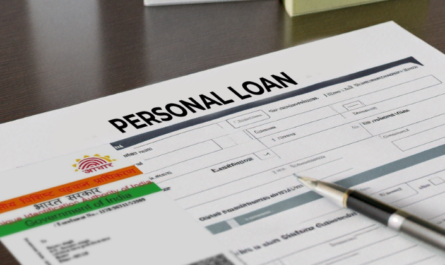This guide will walk you through the key steps to start a delivery business. There are no universal road maps for this process, so it’s important to connect with a trusted mentor who can help you navigate the inevitable challenges and surprises that arise. Contact your local SCORE office if you don’t already have a mentor.
1. Start with a solid business plan.
It’s impossible to reach a milestone that has never been identified, so to set your delivery business up for success, you need to chart the road ahead. The best way to get your business plan started is to answer key questions about what you want to do and how you want to do it.
Possible questions include:
- What’s your main objective?
- What are your primary strategies?
- What’s your mission statement?
- What have you learned from your industry analysis?
- What have you learned from your market analysis?
- What have you learned from your competitor analysis?
- How will you structure your organization?
- What are your financial projections?
- What are your financial needs?
Armed with the knowledge gained through your research, you can craft an executive summary. This is where you’ll boil everything down to its essence and describe what makes your business special in just a few sentences.
2. Choose your business name.
If you don’t believe business names matter, just ask the owners of ISIS Chocolates or the masterminds behind Qwikster. Start your name selection process by making a comprehensive list of possible names. After narrowing it down to a handful of top contenders, take the time to see if they’re all currently available. You can research industry directories, conduct Google searches, and check with the US Patent and Trademark Office (USPTO).
Before moving forward with a name, workshop it with your friends and family. They’ll help you spot any issues such as unfortunate double meanings that could cause embarrassment later on.
In order to have an internet presence, you’ll need to purchase a domain related to your business name. Sometimes your domain will be your exact name, such as apple.com. In other cases, you may need to get creative. What matters is that your domain is short, memorable, and easy to recognize.
This step is also a great time to lock down your social media accounts. Even if you don’t plan to use every social channel immediately, you can create accounts on every platform to ensure you own the name when you decide to make it active.
3. Choose a business structure.
After choosing a name that truly shines, you can tackle setting up your business. You have several legal structures from which to choose.
Two of the most popular legal structures are sole proprietorship and limited liability company (LLC). A sole proprietorship is ideal for lean operations with a single owner. Given the minimal scope associated with this option, the setup is among the most streamlined and affordable. One potential drawback of a sole proprietorship is that it offers no protection from business debts. Any liabilities will fall directly on your doorstep.
An LLC earns its name from the fact that it provides the type of liability protection absent from a sole proprietorship. The setup is more involved and the tax situation isn’t always as favorable, but LLCs can be ideal structures for many delivery businesses.
Other common business structures include:
- C corporation
- S Corporation
- Partnership
- Limited partnership
Carefully review these options with your accountant or other mentor and then identify the structure that best aligns with your business’s operations and goals.
4. Register your business and set up a bank account.
If you have employees or operate as a corporation or partnership, you will need to register for an employer identification number (EIN) with the IRS.
An EIN is a unique nine-digit number that the Internal Revenue Service (IRS) assigns to business entities in the United States. Like a Social Security Number, an EIN identifies a business for tax filing and reporting purposes. It’s used when opening a bank account, applying for business licenses, and filing tax returns.
Once you’ve taken care of your EIN, you’ll be ready to open a bank account for your business. Having a business bank account separate from your personal bank account is critical for accounting purposes and can impact your ability to get capital for your business.
5. Sign up for an insurance policy.
Next, you’ll need to acquire business insurance.
Typical insurance policies include:
- General liability insurance to cover potential legal claims due to accidents or damages.
- Commercial auto insurance to protect vehicles and drivers involved in the delivery process.
- Cargo insurance to cover the goods being transported in case of theft, loss, or damage during the delivery process.
6. Set up your business finances.
Bookkeeping software will help you go through the initial steps of setting up your bookkeeping. You can also learn more about bookkeeping in this bookkeeping guide.
Hiring an accountant can be a proactive way to anticipate business threats, figure out financial strategies, and make the best financial decisions. Many new businesses make dozens of unforced errors in the first year of business, so it’s worth the cost to have an experienced adviser who can help you make the most of your money.
8. Get the word out to customers.
The exact marketing strategies you use will depend on your location, customer profile, experience level, budget, and other factors. Here is a handful of possible ideas to consider:
- Use an introductory offer: People love trying out a service before signing on for more. You could offer a discount for anyone trying your delivery services.
- Find a partner: Draw on the network you’ve developed, and look for other businesses within your industry you could collaborate with. As long as they aren’t competitors, it can be mutually beneficial to work together and reach each other’s customers.
- Use social ads: You’ve already created accounts on Facebook and other social networks, so you can leverage the affordable advertising these platforms provide. It’s a great way to spread the word early on without breaking the bank.
- Reward loyalty: Offer incentives for your most loyal customers such as bulk discounts or add-on services.
How equipment financing can help.
Starting a delivery business can require a significant investment in tools and equipment, which might be challenging to handle out of pocket. This is where equipment financing can be incredibly beneficial. By opting for equipment financing, you can spread out the cost of purchasing vehicles, GPS systems, and other necessary tools over time, making it more manageable for your budget.
Your delivery business will undoubtedly encounter some challenges in its first year. But if you lean on your network and commit to treating your customers right, you’ll set the course for a bright future.
Quickly compare loan offers from multiple lenders.
Applying is free and won’t impact your credit.

Information provided on this blog is for educational purposes only, and is not intended to be business, legal, tax, or accounting advice. The views and opinions expressed in this blog are those of the authors and do not necessarily reflect the official policy or position of Lendio. While Lendio strives to keep its content up-to-date, it is only accurate as of the date posted. Offers or trends may expire, or may no longer be relevant.
Source link
#Start #Successful #Delivery #Business



